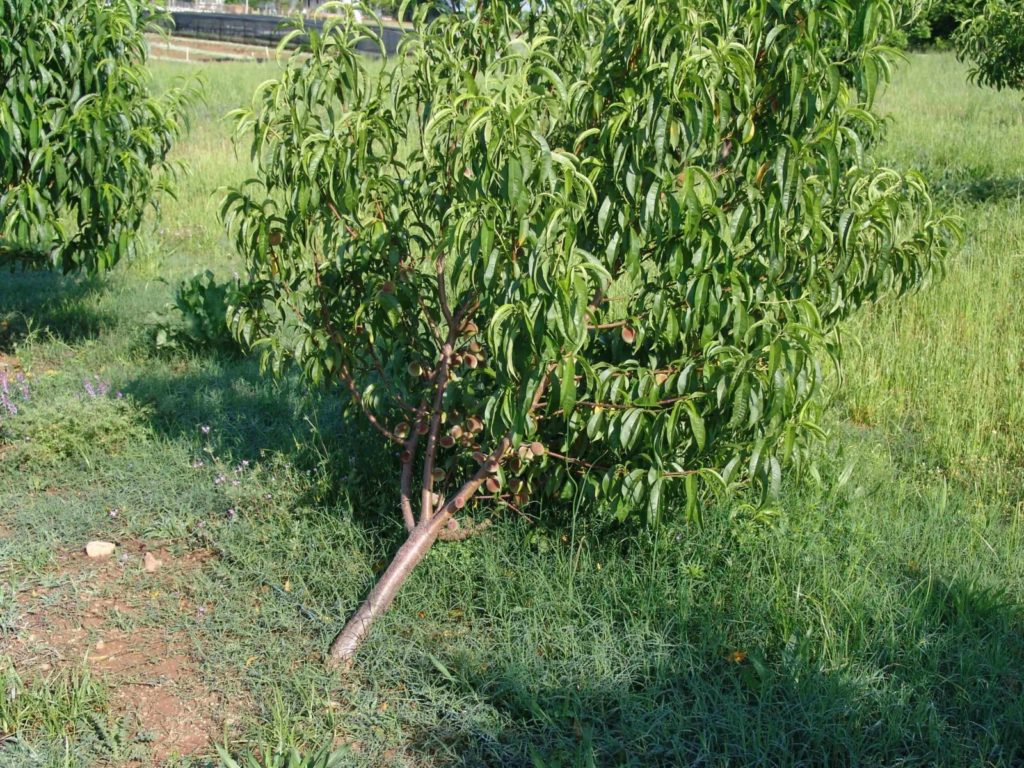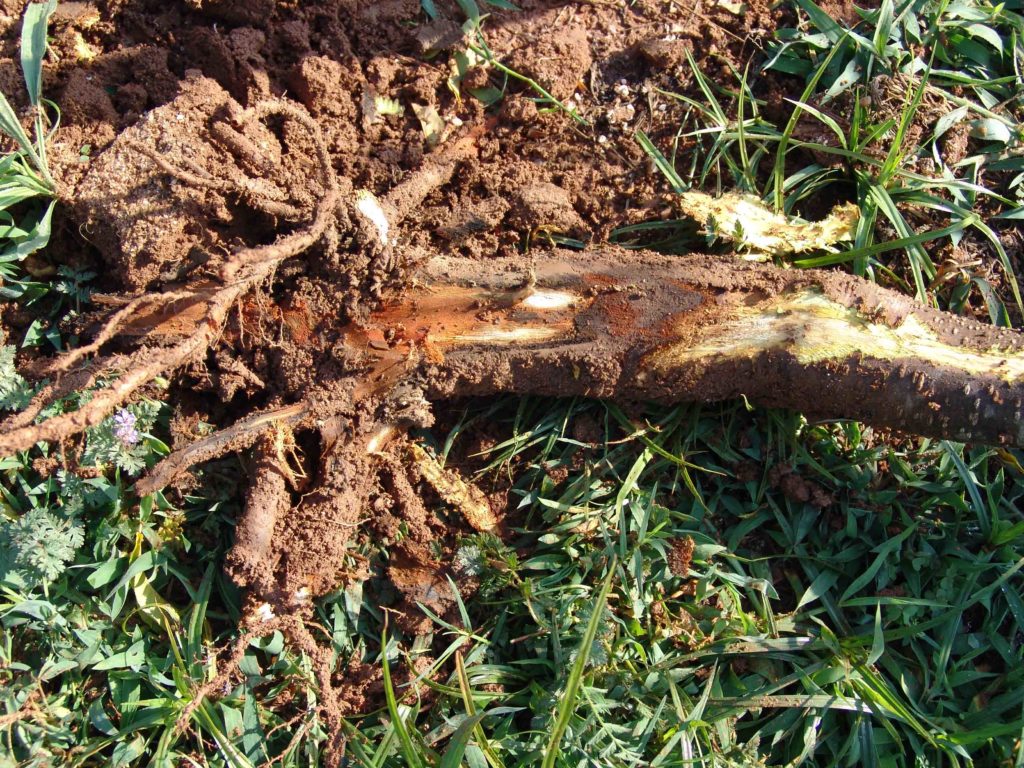Hurricane Ian will probably move relatively quickly through Georgia, but I fear it will have substantial winds as it moves through. Depending on the path, it may cause damage to peach orchards through the Coastal Plain and mid-Georgia area. I hope we all weather the storm well, but I do fear there will be orchard damage.
Unfortunately, it does look like Georgia will experience pretty high winds from hurricane Ian as it passes north. In addition to the direct damage to trees, tree decline and death over time can be a direct result of hurricanes and tropical storms. High winds whip young trees from side-to-side like large pom-poms, since leaves are still present, and trunks/root systems are relatively weak by comparison to larger, established trees. Trees are often laid on their sides, but even erect trees will not escape physical root and crown damage. When one adds the impact of rain-saturated soils, generally ideal for Phytophthora infection, one can see why damaged roots and wet soil will provide a “perfect storm” for root rot. Bottom line, in the following months, roots and trunks may show symptoms of Phytophthora root rot.
There is little that one can do for this type of disease once symptoms are observed. Ridomil Gold, Aliette (non-bearing trees) and Prophyt (possibly other similar products) are registered for control of these pathogens. If one incurs hurricane damage, then the time to treat would be immediately after it occurs, not when symptoms are observed. However, the chances of success under these conditions are not generally considered good. Multiple repeat treatments would also be required, so treatment would be relatively expensive as well. With this said, you need to decide now whether you want to apply fungicides immediately after the hurricane passes over. Application of Prophyt and similar products would require foliage for uptake, so don’t waste this application if there are no leaves on the trees after the hurricane passes. Unfortunately, high winds in young orchards will likely result in dead and dying trees in 2023. Consider that this might be possible, and though I don’t know exactly how the various crop insurance and disaster programs work, delayed death should be part of the equation when it comes to hurricanes.
Stay safe, and I wish you all the best.

